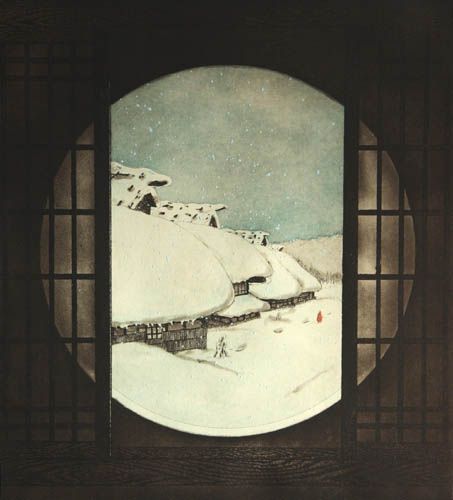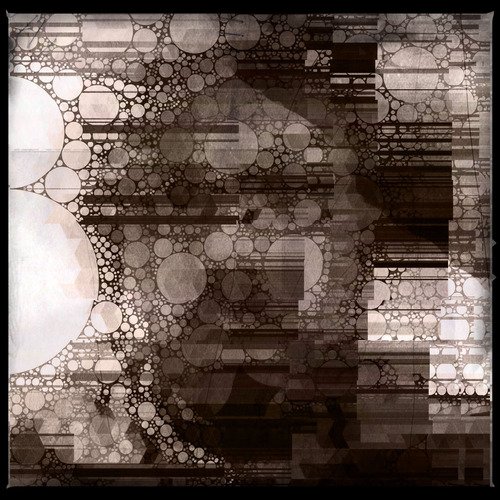Snow Falling! :: Haiku of Japan #42
雪ふるよ障子の穴を見てあれば
yuki furu yo shōji no ana o mite areba
it's snowing!
I can see it
through a hole in the shoji
—Shiki
(Tr. David LaSpina)

(Print by Hiroto Norikane)
Shiki was bedridden much of his life as tuberculosis slowly claimed his life. When the pain was especially bad, he couldn't even lift his head but could only slightly turn it. You can imagine his joy, like that of a child, upon seeing the snow through a tear in the shoji.
Ah—shoji. Now here is where we get to a translators dilemma. I know what shoji are and I'd wager most people do too, but they don't know it by name. Shoji are the wood framed sliding screens or sliding doors that are then covered with translucent paper to let in some soft natural light and that are used in traditional Japanese houses (and often in modern ones as well).
See, you know that kind of door. Stereotypical Japanese images from movies are good for something after all.
So then the dilemma. Do I use the word shoji in the translation, but spend a paragraph explaining what shoji is in a footnote, or do I change the translation to though a hole in the paper screen?
Thoughts?
Tears in the shoji are extremely common. The paper is very thin so it is easy to tear; children especially love to poke holes in it, a mischief that goes back generations from what I have been told. There are kits available in the stores to do quick repair (basically a special kind of tape), and, once a year (on New Years), you are suppose to rip all the old paper off the shoji and line it with new paper for the new year, but in practice few do the latter total replacement every year, and the kits are less effective than you might hope, so people often end up with at least a few holes or tears in the shoji.
The better to see the snow falling.
Don't miss other great haiku in the Haiku of Japan series!
#1–10 — Haiku of Japan :: Collection #1
#11–20 — Haiku of Japan :: Collection #2
#21–30 — Haiku of Japan :: Collection #3
#31 — Am I a Butterfly or a Man?
#32 — Hidden Grey Hair
#33 — Sleeping Butterfly
#34 — Never To Grow Old
#35 — From Dog to Cat
#36 — Short Night
#37 — Silent Moon
#38 — Temple Pine Needles
#39 — Nothing and Everything
#40 — Stubborn Scarecrow
#41 — Falling Camellia
If you enjoyed this post, please like and resteem. Also be sure to follow me to see more from Japan everyday.
I post one photo everyday, as well as a haiku and as time allows, videos, more Japanese history, and so on. Let me know if there is anything about Japan you would like to know more about or would like to see.
 | David LaSpina is an American photographer lost in Japan, trying to capture the beauty of this country one photo at a time. |
Wow, @dbooster, I'm sorry I missed this one when you posted it! It makes me sad for Shiki to have lived this kind of life. Thanks for the interesting info on the shoji!
Thanks for checking it out :) What is amazing is despite his short and tragic life, he still made such a huge impact as to be considered one of the 4 great haiku masters in Japan. Imagine what he could have done had he lived longer.
Yes, @dbooster, that seems to be what has happened with lots of artists, musicians, writers over the years. They live short lives, but impact many lives with their work. Yes, I'm sure he would have written many more!
Thank you for this story, @dbooster . I like to read Your explanations, because I learn from You a lot of new things for me.
Yeah, so interesting! I just learned shoji for the first time from this blog.
Resteemed your article. This article was resteemed because you are part of the New Steemians project. You can learn more about it here: https://steemit.com/introduceyourself/@gaman/new-steemians-project-launch